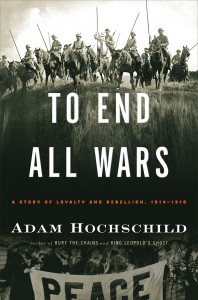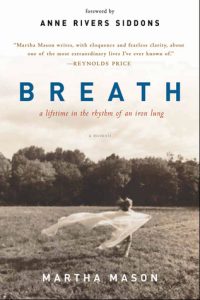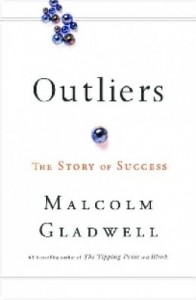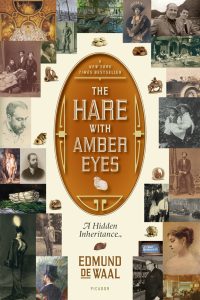There’s still time this summer to head to the beach — or your backyard deck — and spend some time with a good book. We asked some of our alumni professors to recommend a good book or two.
Deborah L. Best (’70, MA ’72)
William L. Poteat Professor of Psychology
One of my favorite summer books has been “To End All Wars,” by Adam Hochschild. Although I have never been attracted to books about war and violence, I picked up this one at the recommendation of several friends. It became my companion on a 16-hour flight from Atlanta to Johannesburg. I was spellbound from the beginning. World War I, which was supposed to be the “war to end all wars,” the first great war of the modern age, actually began decades before with angry demonstrations about women and the vote in Britain, discovery of gold in sleepy little Johannesburg and British concentration camps of Boer women and children. Hochschild chronicles the tempest of one of history’s most senseless wars. For more than three years armies were deadlocked on the Western Front buried into 40-foot-deep trenches with casualties that claimed huge proportions of young men and was particularly lethal for the upper classes. Yet, men and women who opposed the war were jailed, and families split bitterly over the war’s madness. Although it reads like fiction, this well-researched history discloses people, events and moral dilemmas that challenge reality.
Best is the author of numerous books, book chapters and articles on cross-cultural sex stereotypes and gender differences, memory development in children and older adults, and other subjects.
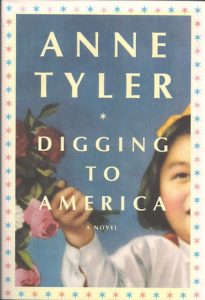 Jill Y. Crainshaw (’84)
Jill Y. Crainshaw (’84)
Professor of Worship and Liturgical Theology at the School of Divinity
I have two recommendations by two Pulitzer prize-winning female authors, Anne Tyler and Geraldine Brooks. Anne Tyler won the Pulitzer Prize in 1989 for “Breathing Lessons.” I read “Digging to America” (2006) this summer. The book tells the story of two very different American families who each adopt a child from Korea.
Geraldine Brooks won the Pulitzer in 2006 for “March.” I read “Year of Wonders” (2001) this summer. In this book, set in 1666, Brooks tells the story of a young woman’s experience of living through the bubonic plague in a small village.
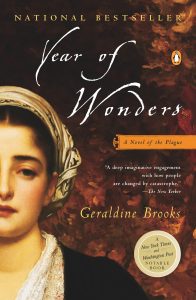 I actually read three novels by each of these women this summer. They are fine writers. Their good story-telling reminded me of how valuable it is for one who preaches, as I do, to “have a good novel going” while reading and studying the Bible and theology. Reading good fiction makes me a better preacher.
I actually read three novels by each of these women this summer. They are fine writers. Their good story-telling reminded me of how valuable it is for one who preaches, as I do, to “have a good novel going” while reading and studying the Bible and theology. Reading good fiction makes me a better preacher.
Crainshaw is the author of three books and is currently completing a manuscript exploring how women’s ordination rites over the last 25 years have shaped pastoral leaders and congregations.
Mary M. Dalton (’83)
Professor of Communication and Women’s and Gender Studies and Co-Director of the Documentary Film Program
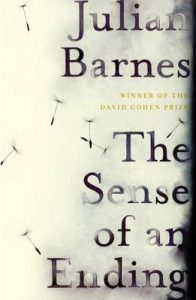 How would I describe “The Sense of an Ending” by Julian Barnes? Sublime. Sometimes one word is enough, but you will certainly want to know more. Winner of the 2011 Man Booker Prize, this is the story of a retired man thinking back over his life and, particularly, events from his school days over 40 years before. I realize this description doesn’t make the novel sound compelling, but — while the plot is rich enough as recollection collides with unfolding events — it is the use of language and character development that are the most pleasurable parts of reading a novel that is this small in size yet deep in scope. You won’t be disappointed.
How would I describe “The Sense of an Ending” by Julian Barnes? Sublime. Sometimes one word is enough, but you will certainly want to know more. Winner of the 2011 Man Booker Prize, this is the story of a retired man thinking back over his life and, particularly, events from his school days over 40 years before. I realize this description doesn’t make the novel sound compelling, but — while the plot is rich enough as recollection collides with unfolding events — it is the use of language and character development that are the most pleasurable parts of reading a novel that is this small in size yet deep in scope. You won’t be disappointed.
Dalton is the author of “The Hollywood Curriculum: Teachers in the Movies” and co-author of “Teacher TV: Sixty Years of Teachers on Television.” She is currently working on a documentary called Living in the Overlap with colleagues in the Documentary Film Program.
Samuel T. Gladding (’67, MAEd ’71)
Chair and Professor of Counseling
“Breath: Life in the Rhythm of an Iron Lung,” a memoir by Martha Mason (’60), is a tale of heroism and courage. Struck down with polio at age 10 on the same day as her older brother’s funeral from the same disease, Martha fights back from paralysis and predictions of imminent death. She achieves distinctions from inside her iron lung such as graduating from Wake Forest first in her class and being elected to Phi Beta Kappa. She learns to run a household, care for her incapacitated mother, and reach out in friendship and love to her neighbors in the small western North Carolina town of Lattimore. Her story is inspirational and extraordinary as she overcomes the tragedy of her circumstances with grace, strength, will and humor. Oh, and if you wish to see Martha’s story on the screen, Dr. Mary Dalton has captured it in a documentary film “Martha in Lattimore.”
In “Outliers,” Malcolm Gladwell examines the lives of successful people and how their stories are more than ones encompassing intelligence and ambition. It matters where and when you were born as well as your family background and culture, according to Gladwell. People who achieve fall outside normal experiences. They are the beneficiaries of hidden advantages as well as hard work and worldviews that are unique. If nothing more, “Outliers” will introduce you to some fascinating and familiar people and cause you to think about their lives as well as your own.
Gladding is the author of 37 books on counseling (including revisions). He is currently working on the latest volume in “The History of Wake Forest,” covering the administration of Thomas K. Hearn Jr., 1983-2005.
Mary Martin Niepold (’65)
Senior Lecturer of Journalism
A friend in Massachusetts recommended “The Hare with Amber Eyes” by Edmund de Waal. We had been talking about our family’s histories, and she told me about de Waal’s journey that tracks his own family through five generations. The journey started as de Waal’s interest in finding the origin of his family’s collection of rare netsuke, the elegant miniature Japanese carvings, including a hare with amber eyes. He had inherited the collection, and to track their origin, the author takes us through the world of his family, the Ephrussis, a banking dynasty as wealthy as the Rothschilds who inhabited Odessa, Paris, and finally Vienna and the Nazi occupation. This is far more than an anthropological uncovering of a rare collection — rather, it is an uncovering of a notable family who were art collectors and friends of some of the finest painters and authors in late 19th century Europe. De Waal is a world-acclaimed ceramicist. With this book, he claims title as a grand and authentic storyteller, as well.
Niepold is currently working on “The Roots and The Light,” a book about African grandmothers and the Nyanya Project, which she founded.

